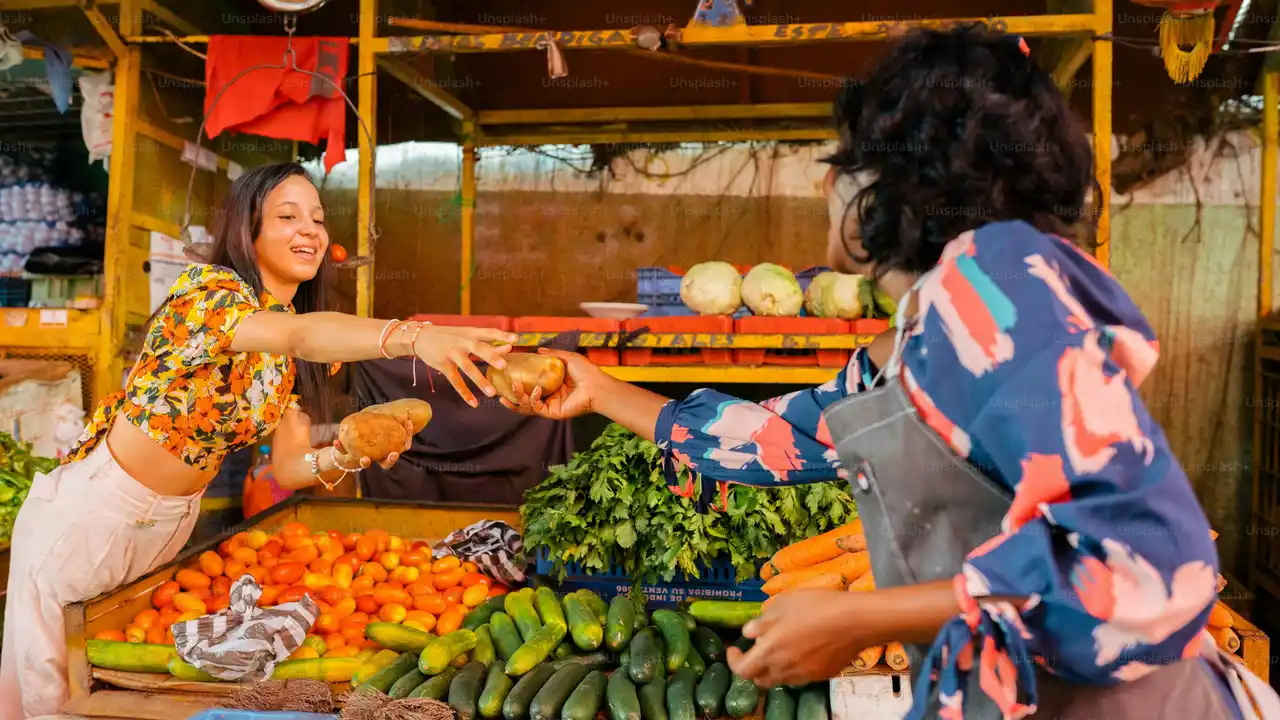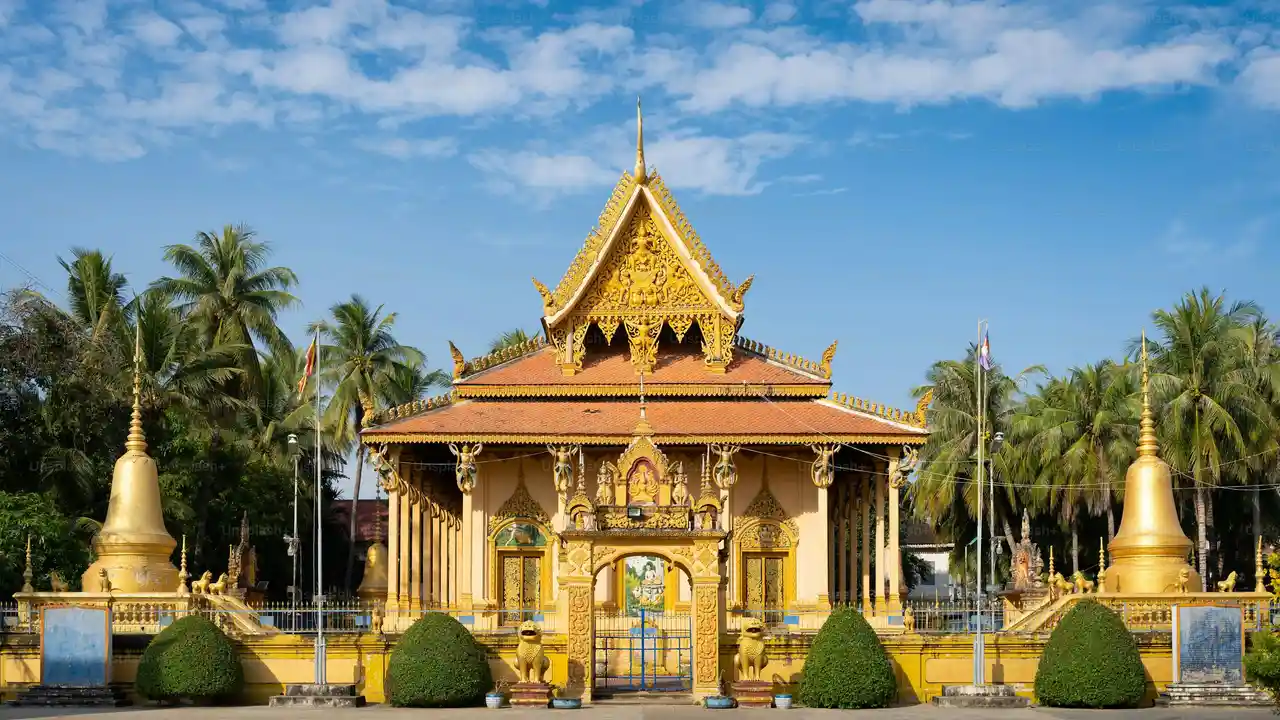Laos Traditional Food Tasting Tour
Embark on a traditional food tasting tour in Laos and discover the country's culinary secrets. Sample local delicacies, regional specialties, and traditional dishes. Experience the authentic flavors of Laos.

Exploring Lao Cuisine A Culinary Adventure
So, you're thinking about heading to Laos? Awesome choice! Beyond the stunning landscapes and serene temples, Laos boasts a seriously underrated food scene. We're talking flavors that'll explode in your mouth, dishes you've never even dreamed of, and experiences that'll connect you to the heart of Lao culture. Forget the typical tourist traps; we're diving headfirst into a traditional food tasting tour, uncovering the secrets behind this delicious cuisine.
What to Expect on a Lao Food Tasting Tour
These tours aren't just about eating (though that's a major perk!). They're about understanding the story behind the food. You’ll typically find options ranging from small group walking tours in Vientiane or Luang Prabang, to more immersive experiences that take you into the countryside. Expect to visit local markets overflowing with exotic fruits, vegetables, and spices you've probably never seen before. You'll likely get to sample street food staples, learn about traditional cooking methods, and even try your hand at preparing a few dishes yourself!
The best tours are led by passionate locals who are eager to share their knowledge and love for Lao food. They'll explain the history behind each dish, the significance of certain ingredients, and the cultural context in which it's enjoyed. Be prepared to ask questions, engage with the vendors, and embrace the unexpected. That's where the real magic happens!
Must-Try Dishes on Your Lao Food Tasting Tour
Okay, let's talk food! Here are a few absolute must-try dishes you're likely to encounter on your tour:
- Larb (Laap): This is considered the national dish of Laos. It's a minced meat salad (usually chicken, pork, or beef) flavored with fish sauce, lime juice, roasted rice powder, herbs, and chili. It's savory, tangy, and a little bit spicy – a total flavor bomb!
- Sticky Rice (Khao Niao): You can't have a Lao meal without sticky rice! It's steamed in a bamboo basket and eaten with your hands. It's the perfect accompaniment to almost any dish, providing a satisfying and slightly sweet base.
- Tam Mak Hoong (Green Papaya Salad): Similar to Thai papaya salad, but with its own unique Lao twist. It features shredded green papaya, tomatoes, green beans, garlic, chili, fish sauce, and lime juice. It's refreshing, spicy, and packed with flavor.
- Or Lam: A hearty and flavorful stew made with meat (often buffalo or beef), vegetables, herbs, and a special ingredient called *saa*. *Saa* is a type of wood vine that gives the stew a unique, slightly bitter flavor.
- Sai Oua (Lao Sausage): This flavorful sausage is made with pork, herbs, and spices. It's often grilled or fried and served as a snack or appetizer.
- Khao Piak Sen: A delicious noodle soup, often considered Lao comfort food. It features thick, chewy rice noodles in a flavorful broth with chicken, pork, or beef.
Recommended Lao Food Tasting Tours and Experiences
Ready to book your culinary adventure? Here are a few highly-rated tour operators and experiences to consider:
- Vientiane Food Tour (Secret Food Tours): This walking tour takes you through the heart of Vientiane, sampling street food staples and hidden culinary gems. Expect to try Larb, sticky rice, and other local favorites.
Price: Around $60 USD per person.
Pros: Well-organized, knowledgeable guides, delicious food selection.
Cons: Can be a bit crowded, limited seating at some locations. - Luang Prabang Cooking Class (Tamarind Restaurant): While technically not a \"tour,\" this cooking class offers an immersive experience in Lao cuisine. You'll learn to prepare several traditional dishes from scratch, using fresh, local ingredients.
Price: Around $50 USD per person.
Pros: Hands-on experience, delicious results, beautiful setting.
Cons: Requires some cooking skills (though beginners are welcome). - Countryside Food Tour (Various Local Operators): Many local tour operators offer day trips to the countryside, where you can visit local markets, farms, and villages. These tours often include a traditional Lao lunch prepared with fresh, local ingredients. Look for tours that emphasize sustainable tourism and support local communities.
Price: Varies depending on the operator and itinerary, but typically around $75-$120 USD per person.
Pros: Immersive cultural experience, supports local communities, beautiful scenery.
Cons: Can be a long day, may require some physical activity. - Street Food Walking Tour (Backstreet Academy): These tours are available in both Vientiane and Luang Prabang. They focus on exploring the hidden culinary gems of the backstreets, sampling authentic street food dishes that you might not find on your own.
Price: Around $40 USD per person.
Pros: Affordable, authentic, supports local vendors.
Cons: Can be a bit chaotic, may require some adventurous eating.
Comparing Food Tour Options Which is Right for You
Choosing the right food tour depends on your interests, budget, and travel style. Here’s a quick comparison to help you decide:
- For the Culinary Expert: Tamarind Restaurant Cooking Class. This offers the most in-depth, hands-on experience, allowing you to learn the techniques and recipes behind Lao cuisine.
- For the Time-Conscious Traveler: Vientiane Food Tour (Secret Food Tours) or Street Food Walking Tour (Backstreet Academy). These walking tours are a great way to sample a variety of dishes in a short amount of time.
- For the Adventurous Explorer: Countryside Food Tour. This offers a more immersive cultural experience, taking you beyond the city limits to explore local markets, farms, and villages.
- For the Budget Traveler: Street Food Walking Tour (Backstreet Academy). These tours are typically the most affordable option, allowing you to sample delicious street food without breaking the bank.
Beyond the Tour What to Eat on Your Own
Even if you don’t book a formal tour, make sure to explore the Lao food scene on your own! Here are a few tips for finding authentic and delicious food:
- Visit Local Markets: Markets are a great place to find fresh ingredients, local snacks, and prepared meals. Don't be afraid to try something new!
- Eat at Local Restaurants: Look for restaurants that are popular with locals, not just tourists. These are often the best places to find authentic and affordable food.
- Ask for Recommendations: Ask your hotel staff, tour guide, or other locals for their favorite restaurants and dishes.
- Be Adventurous: Don't be afraid to try new things! Lao cuisine is full of surprises, and you might just discover your new favorite dish.
Essential Lao Food Products to Try and Buy
Want to bring a taste of Laos home with you? Here are a few essential Lao food products to look for:
- Lao Coffee: Laos produces some of the best coffee in the world, known for its rich flavor and smooth texture. Look for locally grown and roasted beans.
Pricing: A bag of locally roasted beans can range from $8-$20 USD, depending on the quality and origin.
Usage Scenario: Perfect for brewing at home or giving as a gift to coffee-loving friends.
Product Comparison: Compare Arabica vs. Robusta beans for different flavor profiles. Arabica is generally smoother and more aromatic, while Robusta is bolder and has higher caffeine content. - Lao Rice Whiskey (Lao-Lao): This strong and potent rice whiskey is a local favorite. Be warned – it packs a punch!
Pricing: A bottle of Lao-Lao can be found for as little as $2-$5 USD in local markets.
Usage Scenario: Traditionally consumed during celebrations or as a digestive aid.
Product Comparison: Different distilleries produce varying qualities of Lao-Lao. Look for brands with a smoother taste and less harsh aftertaste. Some distilleries also infuse the whiskey with herbs or spices for added flavor. - Jeow Bong (Chili Paste): This spicy and flavorful chili paste is a staple in Lao cuisine. It's made with roasted chilies, garlic, fish sauce, and other spices.
Pricing: A small jar of Jeow Bong typically costs around $3-$5 USD.
Usage Scenario: Used as a condiment to add heat and flavor to various dishes.
Product Comparison: Different varieties of Jeow Bong exist, ranging in spice level and flavor profiles. Experiment with different types to find your favorite. Some versions include ingredients like roasted peanuts or fermented fish for added complexity. - Dried Buffalo Meat (Sien Savanh): A popular snack in Laos, dried buffalo meat is seasoned with spices and dried in the sun. It's a chewy and flavorful treat.
Pricing: A bag of dried buffalo meat can range from $5-$10 USD, depending on the quantity and quality.
Usage Scenario: Perfect for snacking on the go or enjoying as a part of a picnic.
Product Comparison: Look for dried buffalo meat that is tender and not overly tough. The seasoning should be balanced and flavorful, without being too salty or spicy. - Bamboo Shoots (Naw Mai): Bamboo shoots are a common ingredient in Lao cuisine, used in soups, stews, and salads. They have a slightly sweet and earthy flavor.
Pricing: Canned or fresh bamboo shoots can be found for around $2-$4 USD per can or bunch.
Usage Scenario: Use in Lao dishes like Or Lam or Mok Pa (steamed fish in banana leaves).
Product Comparison: Fresh bamboo shoots require more preparation, but offer a superior flavor compared to canned versions. When buying fresh bamboo shoots, look for ones that are firm and have a light color.
Tips for a Successful Lao Food Tasting Adventure
To make the most of your Lao food tasting adventure, keep these tips in mind:
- Be Open-Minded: Try everything, even if it looks or smells unfamiliar! You might just discover your new favorite dish.
- Eat with Your Hands: Sticky rice is traditionally eaten with your hands. Don't be afraid to get your fingers dirty!
- Learn a Few Basic Lao Phrases: Knowing a few basic phrases like \"Sabaidee\" (hello) and \"Khop Chai\" (thank you) will go a long way with the locals.
- Drink Plenty of Water: Lao food can be spicy, so make sure to stay hydrated.
- Respect Local Customs: Dress modestly when visiting temples and other religious sites.
- Bargain Respectfully: If you're shopping at local markets, it's acceptable to bargain, but do so respectfully.
- Be Aware of Hygiene: Choose street food vendors that look clean and hygienic.
Lao Food and Dietary Restrictions
Traveling with dietary restrictions? Here's what you need to know about Lao cuisine:
- Vegetarian and Vegan Options: While Lao cuisine is traditionally meat-based, it's becoming increasingly easy to find vegetarian and vegan options, especially in tourist areas. Look for dishes made with tofu, vegetables, and mushrooms. Be sure to ask about fish sauce, as it's a common ingredient in many dishes.
- Gluten-Free Options: Sticky rice is naturally gluten-free, making it a staple for those with gluten sensitivities. Many soups and stews can also be made gluten-free by omitting soy sauce.
- Allergies: If you have any allergies, be sure to inform your tour guide or restaurant staff. Common allergens in Lao cuisine include peanuts, shellfish, and soy sauce.
Final Thoughts On Your Culinary Journey in Laos
A traditional food tasting tour in Laos is more than just a meal; it's an immersion into the country's culture, history, and traditions. It's a chance to connect with locals, learn about their way of life, and experience the authentic flavors of Laos. So, pack your bags, bring your appetite, and get ready for a culinary adventure you'll never forget!
:max_bytes(150000):strip_icc()/277019-baked-pork-chops-with-cream-of-mushroom-soup-DDMFS-beauty-4x3-BG-7505-5762b731cf30447d9cbbbbbf387beafa.jpg)






